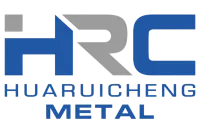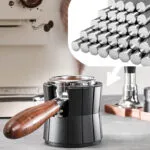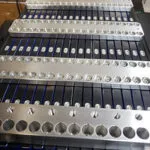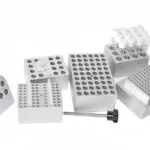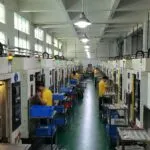Zinc Die Casting Services
What is zinc die casting?
Zinc die casting is a die casting process that involves melting a zinc alloy (hence the name zinc alloy die casting) and injecting it into an already-prepared process.
Zinc alloys are suitable for parts manufacturing because of their ductility, impact strength and low melting point. In addition, due to the low melting point of the material, the casting process is carried out at a lower temperature. Hence the name “hot chamber die casting process”.
In addition, compared to other die-casting compatible materials, being a hot chamber process can also extend the service life of the mold, the time required to replace the mold, and reduce costs.

Advantages of zinc die casting
Although die casting is compatible with a wide range of materials, zinc alloy die casting is popular because of its mechanical properties. For example, it is strong, tough, robust and cost-effective compared to other alloys. Here are some of the advantages of this process.
easy to assemble
Like any other die casting process, the entire part is cast as one piece. As a result, assembly is reduced.
Thin-wall high precision
Zinc alloys are stronger than other with die casting,so design requiring reduced wall thickness can be implemented.
Better properties
Based on mechanical properties such as strength and durability, zinc alloys are superior to aluminum and magnesium
Make complex geometries
It forms joints with other materials and is suitable for manufacturing parts with complex geometries.
Longer tool life
Zinc alloy is less abrasive and has a lower melting point, so the mold life is about ten times that of ordinary molds.
Faster production
The zinc alloy has a low melting point and requires hot chamber die casting during high pressure injection
what makes us different
HRC METAL DIE CASTING 4 implementation standards
01. Mold standard
Uniform mold making and mold opening. Guaranteed by a master with 20 years of experience
03.Material standards
Use high-quality imported environmentally friendly high-density alloy materials to ensure stable quality of die-casting parts

02.Process standards
No flash, no pitting, guaranteed electroplating thickness, strictly implement SGS factory inspection standards
04.QC Standards
Production sampling inspection, shipment full inspection, 99.99% pass rate
Craftsmanship die casting quality casting







Zinc Alloy Die Casting FAQs
Issues to note when zinc alloy die casting
1. Controlling alloy composition starts with purchasing alloy ingots. Alloy ingots must be based on ultra-high purity zinc, plus ultra-high purity aluminum, magnesium, and copper. The supplier has strict composition standards. High-quality zinc alloy materials are the guarantee for the production of castings.
2. The purchased alloy ingots must be stored in a clean and dry area to avoid long-term exposure to moisture and white rust, or factory stolen goods to increase slag production and metal loss. A clean factory environment is very effective in controlling alloy composition.
3. The ratio of new materials to return materials such as nozzles should not exceed 30-50%. Generally, new materials: old materials = 70:30. The aluminum and magnesium in the continuous remelting alloy gradually decrease.
4. When remelting nozzle materials, the remelting temperature must be strictly controlled not to exceed 430 degrees Celsius to avoid the loss of aluminum and magnesium.
5. If conditions permit, it is best to use a centralized furnace to melt the zinc alloy, so that the alloy ingot and the recycled material are evenly proportioned, the solvent can be used more effectively, and the alloy composition and temperature can be kept uniform and stable. Electroplating waste and fine chips should be melted in a separate furnace.
Trend Analysis of Zinc Alloy Die Casting
In terms of application areas, zinc alloy die-casting products are becoming diversified. While continuing to deepen in traditional fields such as automotive parts, hardware, construction industry, and decorations, new fields are being actively explored, such as the field of medical degradable zinc alloys. With the development of science and technology and the upgrading of consumption, various industries have put forward more diversified requirements for the performance and characteristics of zinc alloy die-casting products, prompting products to continue to innovate and expand their application boundaries.
Technological innovation is also a key trend. The application of intelligent and automated technologies in zinc alloy die-casting production is becoming more and more extensive. By introducing Industry 4.0 and digital technology, enterprises can achieve precise control of the production process, improve production efficiency, reduce labor costs, and enhance product quality stability, thereby gaining an advantage in international market competition. At the same time, die-casting technology continues to innovate, and processes such as semi-solid casting and extrusion casting are gradually maturing. In the future, more advanced processes may be applied to zinc alloy die-casting, promoting the overall improvement of the industry’s technical level.
The concept of green environmental protection is increasingly valued internationally, and the zinc alloy die-casting industry is no exception. Under the global background of the “dual carbon” goal, energy conservation and consumption reduction have become an important direction for the development of the industry. Measures such as selecting energy-saving equipment, optimizing the temperature field distribution of the smelting furnace to improve thermal efficiency, and avoiding multiple melting can not only respond to environmental protection requirements, but also reduce the production costs of enterprises and enhance the sustainable development competitiveness of enterprises in the international market.
What are the defects of zinc alloy die casting?
1. Inclusions: Inclusions are other particles that have entered the casting. Inclusions can be in the die-casting alloy or brought in during the die-casting production process. The most common inclusions in zinc die-castings are intermetallic compounds formed by the combination of iron and aluminum. Other oxide particles make surface processing difficult, especially when these particles are on the surface of the casting, forming holes as soon as they fall off. If there are too many oxides in the casting, the mechanical strength of the casting will be reduced.
2. Water marks: Water marks are also called cold marks or flow marks, which are the same phenomenon. Water marks usually appear like lines on the surface of the casting, and the areas separated by this line are solidified separately.
3. Intergranular corrosion: Intergranular corrosion is corrosion that occurs in the boundary layer between metal particles. Intergranular corrosion of zinc-aluminum alloys is particularly prone to occur in high temperature and high humidity environments. If the content of a certain impurity element in the alloy exceeds the standard, intergranular corrosion can occur at room temperature and normal humidity. Intergranular corrosion first occurs on the surface of the casting and then extends along the particle boundaries into the interior of the casting.
4. Shrinkage holes: Shrinkage holes are defined as holes on the surface or inside of the casting due to the reduction in volume of the liquid zinc alloy during the solidification process. The nature of the injection system determines that shrinkage holes will always occur in high-pressure castings where possible. Shrinkage holes must be evenly dispersed and the volume must be as small as possible.
5. Porosity: Porosity is defined as the presence of voids in the solid. There are two main forms of pores in zinc die castings, bubble holes and shrinkage holes. Bubble holes generally appear more in high-pressure casting production because the short solidification time reduces the number of shrinkage holes. Bubble holes can be further defined as holes on the surface or inside of the casting due to the intrusion of gas during the solidification of the metal. The properties of the injection system determine that there will always be pores in high-pressure castings, but these gases should be beaten into fine bubbles (micro bubbles) and the amount of gas should be reduced to a minimum.
This defect can be minimized by improving the design of the gating system, including controlling a reasonable filling pattern and through correct mold venting and selecting the best filling conditions, especially the gate speed.
Put your parts
into production today
All information and uploads are secure and confidential.
